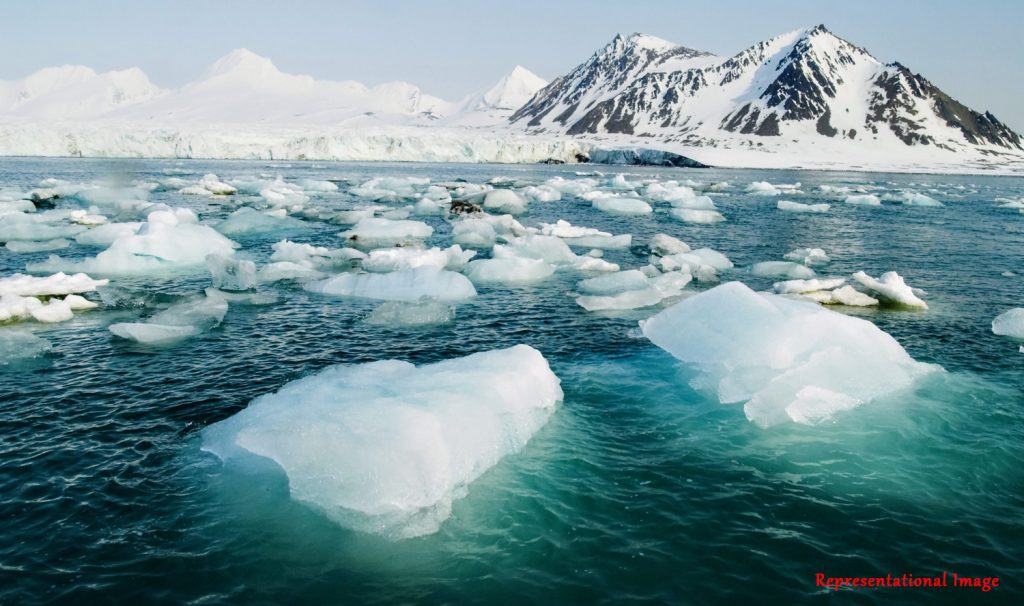
The Arctic Ocean is unique in the sense that it is the shallowest and coldest of all the oceans in the world. It is found in the north, surrounded by Eurasia and North America. The Arctic Ocean has recently been receiving a lot of global attention because the warming temperatures are causing gradual melting of sea ice with a declining rate of 10 to 13 percent, making it the most sensitive region to climate change.
Persistent sea ice melts have caused changes in the general circulation of the atmosphere and global oceans. This has caused an imbalance in the Earth’s energy balance and has become a major case study for global warming and climate change.
To assess the historical trends in the Earth’s energy imbalance, measurement of ocean heat content (OHC) provides the best way to quantify and analyze these trends and imbalances. Ocean heat content refers to the energy absorbed by the ocean, where it is stored for an indefinite time as internal energy also called enthalpy.
Usually, in-situ (original) based conductivity, temperature, and depth (CTD) profile measurements are the best way to estimate the ocean heat content (OHC). However, an accurate reconstruction of regional patterns and long-term global trends in ocean heat content based on in-situ measurements is difficult due to the lack of data to adequately capture spatio-temporal-depth changes (spatio-temporal refers to belonging to both space as well as time).
In order to minimize such uncertainties, ocean reanalysis systems (ORAs) have been developed to provide a complete picture of global ocean variability based on limited observation datasets.
However, the use of ORAs to estimate ocean heat content (OHC) in the Arctic and its marginal seas have a larger error due to the lack of and unavailability of historical in-situ data thus causing poor representation of ocean dynamics.

Mr. Kondeti Vijay Prakash 
Prof. Palanisamy Shanmugam
Thus, in this study conducted by Mr. Kondeti Vijay Prakash and Prof. Palanisamy Shanmugam, from the Department of Ocean Engineering, Indian Institute of Technology (IIT) Madras, Chennai, India, a novel approach was undertaken to calculate the ocean heat content (OHC) in the Arctic region. The method used in this study was to link satellite–derived sea ice thermodynamic parameters with in-situ based OHC data using an artificial neural network (ANN) model.
The ANN model used in this study was found to be successful as it accurately estimated OHC changes and captured the spatio-temporal changes with minimum uncertainty in the determination of the historical trends and regional patterns. This model was even able to assess OHC up to 700 metres depth.
Due to the lack of available data, a full-depth estimate of OHC is less feasible. Many factors need to be considered in order to reduce uncertainty such as the requirement of more valid data, optimization of the artificial neural network (ANN) model with more independent validation data, improvement of satellite-based estimates of thermodynamic parameters, and conducting further studies on the heat fluxes critical to the thermodynamic model in the ice-covered top layer of the ocean.
Dr. Nasiha Jahirhussain from the Department of Geography, University of Victoria, Victoria, BC, Canada, gave her observations on this study and appreciated the efforts of the authors by giving the following comments: “The ocean is the Earth’s most prominent solar energy collector. The heat energy absorbed by the sea is transferred from one location to another in more extended time periods, but it does not cease to exist. By melting polar ice shelves and evaporating water, ocean heat energy eventually returns to the rest of the Earth system. Because of its phenomenal ability to store and release heat over prolonged periods, the ocean plays a critical role in stabilizing the Earth’s climate system.
In this research conducted by Mr. Kondeti Vijay Prakash and Prof. Palanisamy Shanmugam, the Arctic Ocean heat content (OHC) is estimated using satellite data combined with field observational data. Arctic OHC is a vital measure to represent the global climate system. However, the prior limitation is to quantity of the thermodynamic parameters of the inaccessible near-surface oceanic layer due to imperfect sampling schemes of ice properties. The authors of this research have overcome this challenge through an artificial neural network-based (ANN) novel approach. The authors built an optimum ANN architecture to model the spatial, temporal, and depth variabilities of Arctic OHC with greater accuracy comparable to subsurface in-situ measurements. As a result, the research provides an elaborate and comprehensive framework of Arctic sea-ice heat content estimation in a near real-time and wide coverage of satellite observation data. The authors provide the most impactful research findings through an ANN model approach, leading to a better understanding of global climate change, such as sea level rise and temporal trends of polar sea ice extent decline.”
Article by Akshay Anantharaman
Here is the original link to the paper:
https://ieeexplore.ieee.org/document/9916272









